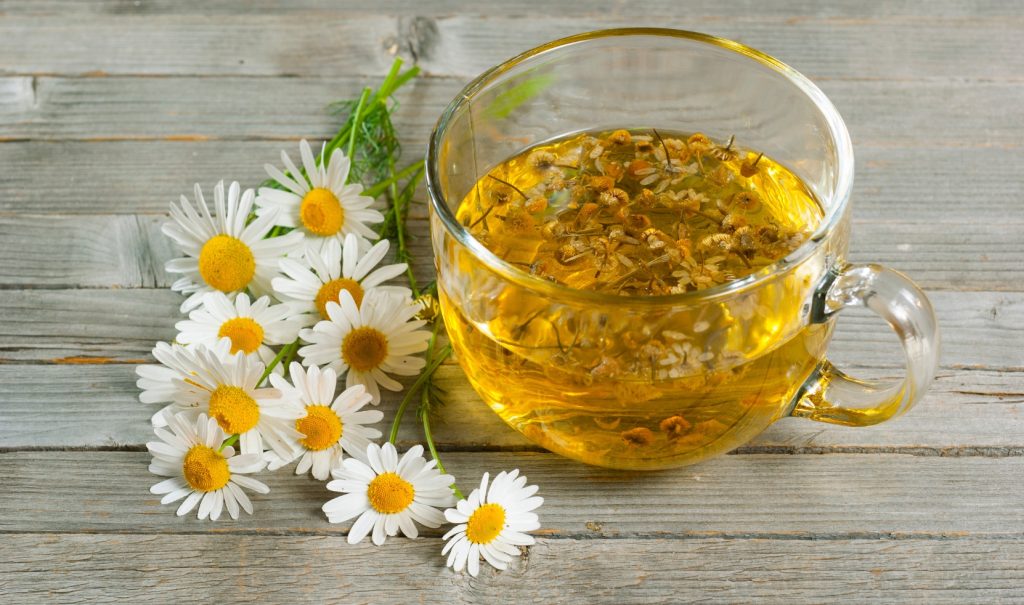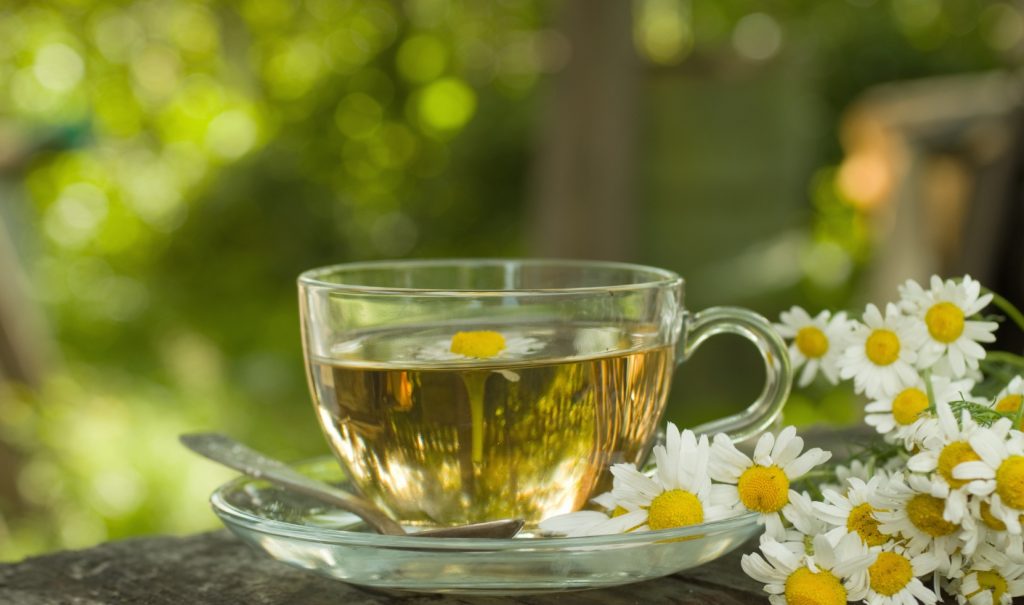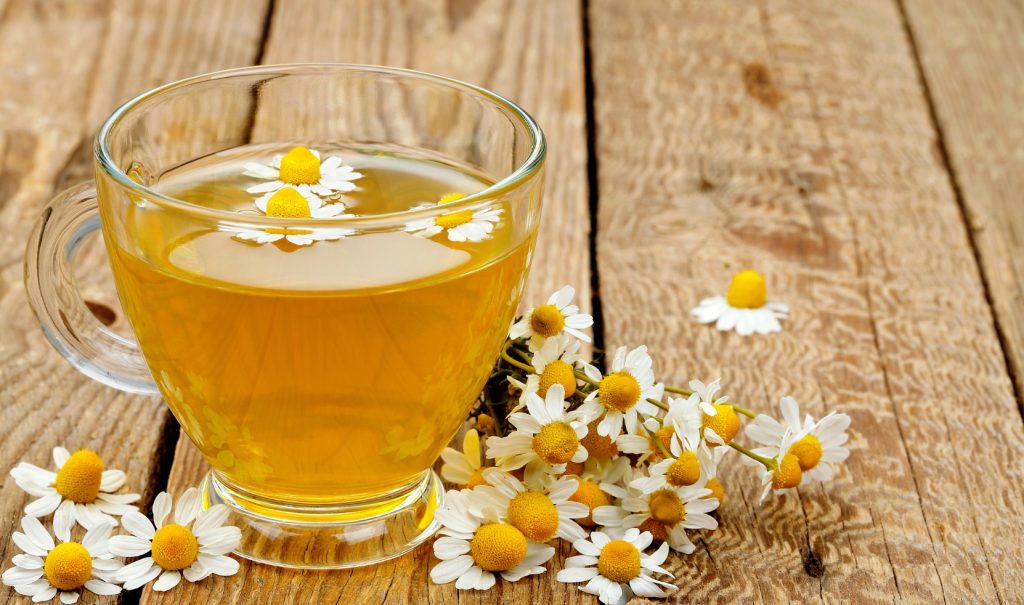Chamomile tea has earned its reputation as one of the best chamomile teas available, widely recognized for its soothing properties and health benefits. From what it tastes like to how to make chamomile tea, this article explores the many facets of chamomile, its various applications—including in essential oils, shampoos, and gardening—and how you can incorporate this wonderful herb into your daily routine. By the end of this guide, you will have a comprehensive understanding of chamomile and its benefits. Click here to purchase your medicinal garden kit!
What is Chamomile?
Chamomile is an herb that belongs to the Asteraceae family, commonly known for its daisy-like flowers. The two primary types used for tea are German chamomile (Matricaria chamomilla) and Roman chamomile (Chamaemelum nobile). Both varieties yield small, fragrant flowers that can be dried for tea or used in other applications.
What Does Chamomile Smell Like?
Chamomile boasts a sweet, apple-like aroma with earthy undertones. The scent is often calming and inviting, making it a popular choice for teas, essential oils, and aromatherapy products. Many people find that the chamomile scent enhances their relaxation routines.
What Does Chamomile Tea Taste Like?
Many people wonder what does chamomile tea taste like? It offers a mild, floral flavor with a hint of sweetness. Some describe it as having apple notes due to its natural compounds. For those who enjoy additional flavors, chamomile can be blended with other ingredients such as lavender, ginger, or honey.

Best Chamomile Tea Varieties
- Organic Chamomile Tea: Grown without synthetic fertilizers or pesticides, organic options are a healthier choice.
- Honey Chamomile Tea: A sweetened version that enhances flavor while providing additional health benefits.
- Lavender Chamomile Tea: Combines the soothing properties of lavender with chamomile for a calming drink.
- Ginger Chamomile Tea: Adds ginger’s zesty flavor for an invigorating twist on traditional chamomile.
- Iced Chamomile Tea: A refreshing cold beverage perfect for warm days.
How to Make Chamomile Tea
Knowing how to make chamomile tea is straightforward: Click here to purchase your medicinal garden kit!
Ingredients:
- Dried chamomile flowers (approximately 1-2 tablespoons per cup)
- Hot water
- Optional: honey, lemon, or milk for added flavor
Instructions:
- Boil water in a kettle.
- Place dried chamomile flowers in a teapot or infuser.
- Pour hot water over the flowers.
- Steep for about 5–10 minutes.
- Strain the flowers and add sweeteners or milk if desired.
Feel free to experiment with different flavors; adding milk creates a delightful chamomile milk tea, while blending it with other herbs results in delicious variations like chamomile lavender tea or ginger chamomile tea.

Health Benefits of Chamomile
Chamomile is not just delicious; it is packed with health benefits:
1. Relaxation and Sleep Aid
One of the most renowned benefits of chamomile tea is its calming effect on the body and mind. Drinking chamomile before bedtime may improve sleep quality due to its sedative properties.
2. Digestive Health
Chamomile can help relieve various digestive issues, such as indigestion, gas, and bloating. It is particularly effective in soothing stomach cramps.
3. Anti-Inflammatory Properties
Chamomile possesses anti-inflammatory compounds that may help reduce symptoms associated with conditions like arthritis or eczema when consumed or applied topically.
4. Skin Care
The anti-inflammatory nature of chamomile makes it a popular ingredient in various skin care products such as chamomile soap or creams for treating irritations like sunburn or rashes.
5. Immune System Support
Regular consumption of chamomile tea may enhance immune function and help fend off infections.
6. Cardiovascular Health
Some studies suggest that compounds in chamomile may improve cardiovascular health by reducing blood pressure and cholesterol levels.

Using Chamomile for Dogs’ Health
Another interesting aspect of chamomile is its potential benefits for pets. Many pet owners ask, “Can dogs have chamomile tea?” The answer is yes—chamomile can help calm anxious dogs and soothe upset stomachs when given appropriately.
Chamomile Tea for Dogs
If considering giving your dog chamomile tea, it’s essential to consult your veterinarian first. Generally, it’s safe when offered in moderation but should never replace prescribed medications.
Companion Plants for Chamomile
If you’re interested in gardening, consider planting chamomile companion plants like mint or cabbage nearby; they can enhance growth and deter pests while supporting each other in your garden ecosystem. Click here to purchase your medicinal garden kit!
How to Grow Chamomile from Seeds
Growing your own chamomile allows you to have fresh ingredients at your disposal:
Choosing Your Seeds
You can choose between Roman and German varieties based on your intended use—German is typically favored for making tea due to its higher essential oil content.
Planting Guidelines
- Location: Choose an area that receives full sun.
- Soil Preparation: Use well-draining soil enriched with organic matter.
- Sowing Seeds: Scatter seeds on the soil surface without covering them since they need light to germinate.
Watering Needs
Keep the soil consistently moist but not soggy during germination—water gently using a spray bottle or fine nozzle attachment on your hose.
For further articles on Chamomile CLICK HERE
How to Harvest Chamomile
When growing your own chamomiles, knowing when and how to harvest them is crucial:
When to Harvest Chamomile
Chamomile flowers should be harvested when they are fully open but not yet wilted or turning brown—typically during late morning when dew has dried but before the sun becomes too intense.
How to Harvest Chamomile
- Cut the flower heads from the stems using scissors.
- Avoid damaging the plant to ensure continued growth throughout the season.
- To dry chamomiles for tea, spread the harvested flowers on a clean surface in a cool, dry place away from direct sunlight.

Recipes Featuring Chamomiles
Exploring various recipes can add versatility to your usage of chamomiles:
- Chamomile Lavender Tea: Blend equal parts dried chamomiles and lavender flowers for a relaxing herbal infusion.
- Chamomone Milk Tea: Brew regular chamomiles tea and add steamed milk for a soothing drink before bedtime.
- Chamomiles Scented Sachets: Combine dried flowers with lavender in sachets to create lovely fragrance options for your home.
- Honey Vanilla Chamomiles Tea: A delightful combination perfect for winding down after a busy day! Click here to purchase your medicinal garden kit!
How to Dry Chamomiles for Tea
Properly drying your harvested flowers ensures you can enjoy them later:
- Gather freshly picked flowers early in the day when they are at their peak.
- Remove any leaves from the stems as they can retain moisture.
- Spread them out evenly on a clean towel or mesh drying rack away from direct sunlight.
- Allow them to dry completely before storing them in airtight containers.
Popular Blends with Chamomiles
Chamomiles pair beautifully with other herbs to create unique blends that offer additional benefits:
- Lavender and Chamomiles Tea Benefits: Combining these two calming herbs can enhance relaxation while promoting better sleep quality.
- Chamomiles vs Daisy: While similar in appearance, understanding their differences helps ensure you are using true chamomiles for medicinal purposes.
- Blue Chamomiles Oil: Extracted from specific species known for their distinct coloring—this essential oil offers unique properties beneficial for skin care routines.
Potential Side Effects and Contraindications
While generally considered safe for most people, it’s essential to be aware of potential side effects:
- Allergic Reactions: Those allergic to ragweed or related plants should avoid chamomiles products due to possible cross-reactivity.
- Pregnant Women: Pregnant individuals should consult a healthcare provider before using chamomiles as there may be risks associated with pregnancy.
- Drug Interactions: Chamomiles may interact with blood thinners or sedatives; consult a physician if you are on medication before consuming high doses.
- Infants: It is advisable not to give chamomiles products to infants due to potential risks associated with botulism spores found in certain herbal preparations.
- Does Chamolile Tea Stain Teeth?: Unlike some beverages that may cause discoloration due to tannins present—chamolile doesn’t pose significant risks concerning tooth staining!
Conclusion: Embrace the Power of Chamomiles
As you’ve seen throughout this article, whether you enjoy it as tea or use it for its therapeutic benefits through chamomele essential oil, this remarkable herb offers something for everyone—be it relaxation after a long day or relief from digestive woes.
Are you interested in trying some high-quality organic chamolile tea? Click here to find some great options!
With numerous health benefits and diverse applications—from kitchen creations to natural remedies—adding chamoliles into your daily routine could lead you toward better wellness naturally! Remember also that regular enjoyment of teas like honey vanilla candymoles can create delightful flavors while supporting health goals simultaneously.
So why not begin your journey today? Embrace nature’s healing touch by incorporating camomiles into your life—whether via cultivation at home or selecting from an array of delightful herbal products available online! For further articles on Chamomile CLICK HERE


Pingback: What Does Chamomile Tea Taste Like? A Comprehensive Guide to Its Flavor, Benefits, and Preparation -
Pingback: When to Harvest Chamomile: A Complete Guide for Optimal Flavour and Potency -